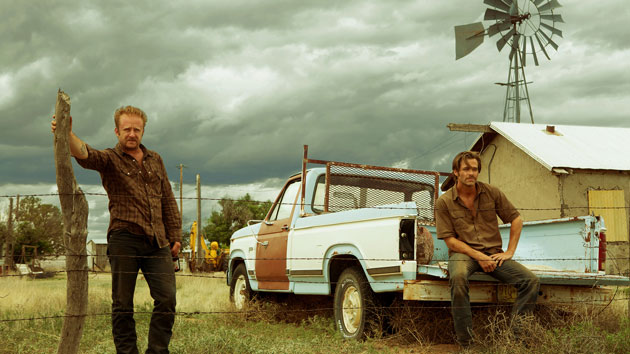Cinematographer Giles Nuttgens, BSC, had been collaborating with David Mackenzie since 2003 when he shot the director's feature Young Adam — a story about a drifter involved in intrigue in economically distressed working class regions of Scotland while working on a barge. Thirteen years later, he recognized similar themes when Mackenzie brought Hell or High Water to him — a tale of two desperate brothers who embark on a bank-robbing scheme in the badlands of Texas at the height of the Great Recession, and that era’s devastating effects on the local population and environment. Those economic woes drive the tale both narratively and visually, and are constantly present on screen as “a visual subtext throughout the narrative,” as Nuttgens recently explained during a conversation for StudioDaily’s Podcast from the Front Lines series. (The film arrives on DVD and Blu-ray this week.)
To hear our full conversation with Giles Nuttgens, watch the video below or right-click here to download an audio-only version.
The challenge Mackenzie tasked him with, Nuttgens says, was to figure out how to connect these realities, as played out in the story, to everything viewers would see on screen. “The land dries out, cattle can’t feed, their ranch ceases to be a ranch, which causes a depression which eventually causes aberrations in behavior,” he explains. “That leads to the bank robberies. So David’s interest is about how individual narratives get informed by influencing factors around them.”
Nuttgens shot the movie with the Arri Alexa XT Studio camera system and a combination of Hawk V-Lite and Angenieux Optimo lensing systems in pursuit of “a general feeling that we were going for something that belonged to a slightly different period,” and a desire to “do something quite light and dusty to make us feel the heat” as they shot the movie in the anamorphic 2.35:1 widescreen format. They deliberately used a formula they hoped would, at some level, evoke genre influences they directly analyzed, such as The Last Picture Show (1971) and Badlands (1973). Additionally, they applied a specific production methodology they have developed together, which Nuttgens feels really paid off for this kind of material and allowed them to work fast and maximize working days.
It’s a formula that included 10 hours of continuous shooting, no large, controlled monitors on set, no producers on set, no cell phones or chairs on set, no clapper boards, and a constant turnover (about five times a day) of dailies to their nearby edit suite, where they would retire at the end of each shooting day to put their heads together. Their purpose at that point, Nuttgens insists, was rarely to discuss “did we get the sequence, but rather, did the material have the right tone? Do we need adjustments, not particularly to lighting or framing, but more to mise en scène — whether there is anything we can do to match up to our original intentions before we get to set. That process is so invaluable.”
Crafts: Shooting
Sections: Creativity
Topics: Podcast Podcasts from the Front Lines Project/Case study alexa xt angenieux ARRI Cinematography giles nuttgens hawk optimo v-lite
Did you enjoy this article? Sign up to receive the StudioDaily Fix eletter containing the latest stories, including news, videos, interviews, reviews and more.









